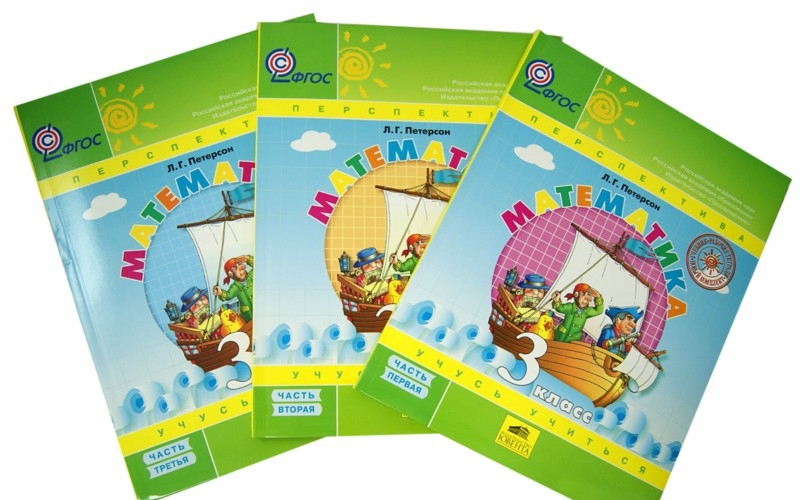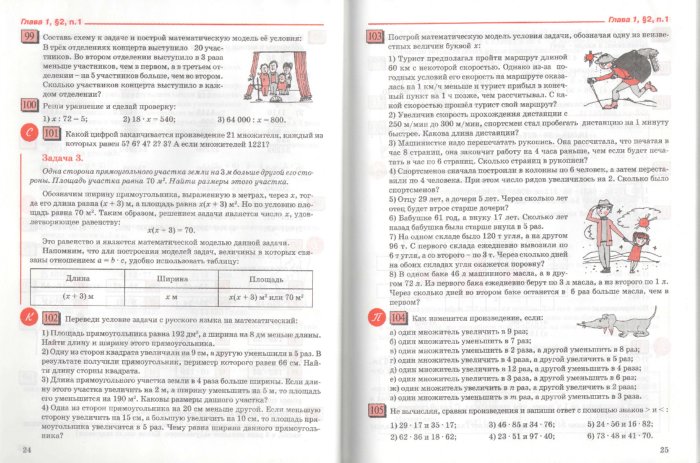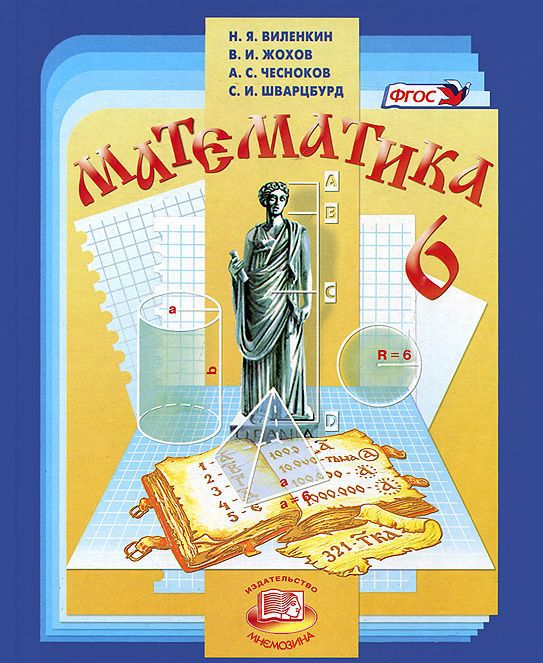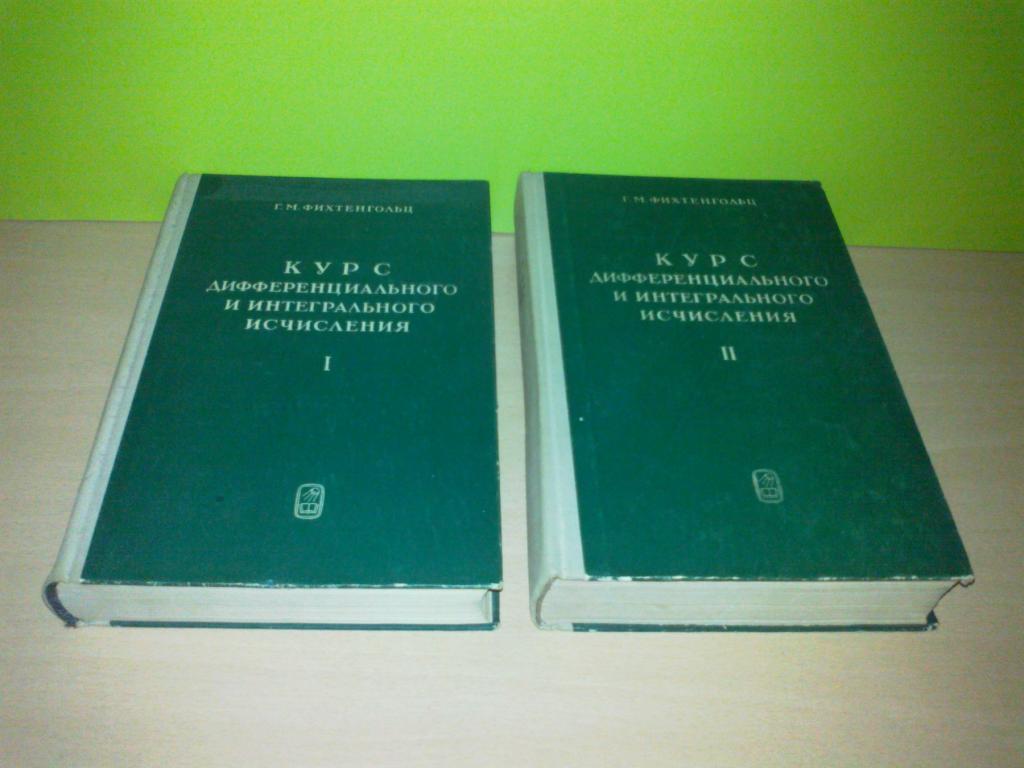The world does not stand still. Something new constantly appears, including in the education system. And in order to comply with all the innovations, new textbooks are constantly being published by different authors and on different programs. This applies to every subject, including mathematics. Which math textbooks are the best? Let's try to figure it out ...
Primary School
Let's start the conversation about the textbooks of mathematics from the very bottom, that is, from elementary school. Below we discuss the best math textbooks for elementary school for each class. But first, it must be said that all textbooks, no matter whose authorship and whatever program they are, are aimed - which are more, and which are less - to develop the cognitive activity of younger students, to stimulate their creative potential, as well as to create flexibility of thinking. The tasks in them are designed to teach schoolchildren such teaching methods as analysis, generalization and observation.
First grade
One of the best math textbooks in grade 1 is the textbook by Maria Moro (the program "School of Russia") and the textbook by Victoria Rudnitskaya (the program "Primary School of the 21st Century"). Below we compare both of these textbooks and, accordingly, both programs, without figuring out which one is better. What is good for one child is completely unsuitable for another, therefore, when choosing a curriculum, you should primarily focus on the development and capabilities of your own baby.
The Moro textbook has lesson content. The program "Schools of Russia" suggests that for the first grade, former preschool children will learn the following things:
- Learn numbers from 0 to 10.
- They will get acquainted with a point, a segment, a curve, a ray, a straight line, a broken line.
- They will find out what equality and inequality are, and they will learn to distinguish more from less.
- Get to know the triangle and the square.
- They will be able to make elementary measurements using a centimeter and a decimeter, a liter and a kilogram.
- They will begin to add and subtract within a dozen, learn how to solve simple problems, and also set a condition for them.
- They learn what the terms and the sum are, and understand the permutation of the terms.
- Find out what is reduced, subtracted and difference.
- They will get acquainted (this is already closer to the end of the school year) with numbers from 11 to 20.
At the end of the Moro textbook for children, tasks of increased complexity are placed. In general, all tasks are arranged from the simplest to the most complex, which allows the child to get comfortable, remember basic things and after that move on to what is more difficult. The authors made sure that the child understood everything: everything is explained in a simple, accessible language, drawings and diagrams are given. Tasks are also the most suitable: there are neither abstruse and complex ones over which dad, mom and grandparents will collectively puzzle, nor primitive ones who are not able to teach anything, do not develop any useful skills in the child. Assignments in the "School of Russia", as mentioned above, are taught to analyze and reflect, but at the same time as the level available to yesterday's kindergartener.
Rudnitskaya has no lesson planning. The program of the 21st Century itself is quite rich, and as one of its main principles, the authors of the textbook call the assignment of tasks to the age and abilities of younger students. The content of the program is also aimed at ensuring that the child not only passively perceives information, but actively explores and cognizes it. The main difference between the textbook Rudnitskaya from all the others, including Moreau, is that it focuses on the development of the creative abilities of kids, on their imagination and logic - quite a lot of space is given to such tasks in the textbook. If the “School of Russia” is considered a lighter program convenient for those who only at school will learn to count and perform addition and subtraction actions, then the “Primary School of the 21st Century” will be more suitable for children who already have some kind of first grade math skills. At the same time, the content of the programs, that is, the material that first-graders must learn, does not differ much.
Second, third and fourth grades
As a rule, according to the program chosen in the first grade, children study the entire primary school. Therefore, having decided for himself in the first grade that the best textbook in mathematics, for example, Moreau, in subsequent years of study in the lower grades, it will not be possible to double-check this theory and confirm or refute it. Unless to transfer the child from class to class or from school to school in search of other programs.
However, in addition to the School of Russia and the School of the 21st Century, there are other programs, and therefore other authors, many of which also receive praise from teachers and parents. So, for example, among the best textbooks in mathematics in the 3rd grade is the textbook of Lyudmila Peterson. In general, regarding Peterson and her teaching aids, talk and debate do not cease. Many call her textbook a nightmare, hell, torment for children and parents. But no less than those who praise the textbook. You can learn from her manuals the whole elementary school, so there are people who mark the Peterson option as the best math textbook in the 4th grade, as well as in the second and the first ... Peterson herself emphasized in several interviews that her textbooks suggest learning not only the child, but also his parents. Let’s try to weigh the pros and cons of Peterson textbooks using a textbook for the third grade as an example (the structure of textbooks and the types of tasks for the author are approximately the same in all classes).

If some textbooks consist of two parts - theory and practice, then Lyudmila Peterson has exclusively practice, despite the fact that the textbooks are also published in several parts. Of all the tips that students have in trying to solve a problem or an example, the textbook contains only drawings or diagrams - and that is not always the case. This is a special idea of the author - not to show children the solutions so that they reach their heads with everything. It’s hard to say for sure whether it’s a minus or a plus, because inquisitive children will take this rather positively, but those who “clapped their ears” in the lesson and did not understand or did not hear the teacher’s explanations would hardly like this method. As well as the parents of such a child, they will have to explain the misunderstanding at home, and since there is no theoretical part in the textbook, you will have to look for something that needs to be explained to the child on the Internet or in some other sources. One must first remember what is at stake.
Of the unusual and interesting in the Peterson textbook, it can be noted that solving, drawing, connecting lines - in general, completing tasks - is permissible in the textbook itself. Tasks, by the way, are also not quite standard: for example, you need to color the picture with the right color, solve the rebus, or make a pattern. Many tasks are logical in nature, requiring the child to be able to explain why it will be so, and not otherwise. There are difficult tasks of the olympiad level, but — and this is rather a minus — Peterson, as in many other textbooks (from simple to complex), does not observe any gradation; exercises are given in a chaotic manner outside of any regularity.
Thus, this textbook is best for children with advanced mathematics abilities, as well as an additional textbook to another, basic one. By the way, many teachers do this: they take the most interesting tasks from Peterson.
High school
High school students have a greater choice of textbooks than in elementary school. And, as a rule, during the course of studies from the fifth to eleventh grade, children manage to learn from the textbooks of various authors. Let's try to go over at least some of them.
Fifth grade
Among the best mathematics textbooks in the 5th grade, there is no doubt a textbook by Georgy Dorofeev (and the above-mentioned Lyudmila Peterson is a co-author). This manual is presented in two parts, but you need to immediately focus on the fact that it focuses on classes with in-depth study of the subject. So, the “average people” are unlikely to be able to learn from it, and they will definitely not be called the best textbook in mathematics of grade 5.
Here the theoretical part is present; it is presented at the beginning of each section: first, a detailed explanation with the rules, then tasks and examples of newly learned material. There are really a lot of tasks, and all of them, importantly, are aimed at the formation of logical thinking. At the same time, they are presented in a playful way - a solution to a problem or an example, as a rule, you need to draw or arrange in the form of a chain, or do something else - in short, the authors made sure that pretty boring and tedious mathematics become completely boring for five-graders. Despite the availability of other good mathematical textbooks, those who consider the development of Dorofeev to be the best textbook in mathematics of the 5th grade have a full basis for such an opinion.

Another great textbook is a manual edited by three authors at once - Lyudmila Demidova, Emanuel Gelfman and Natalia Lobanenko. This textbook is good because it consists of two parts, one of which is theory and the other is practice. The authors submit all the material, playing it on fairy-tale characters (for example, they have Pinocchio, Moomin, and many others) and actions, which is an interesting solution and a truly innovative idea. There are tasks both more difficult, on logic, and simpler, game. The topics are explained in a simple and accessible language, which makes it possible to understand them even not very assiduous or quick-witted children. It is definitely impossible to say which math textbook in grade 5 is better - the two above examples are too different. If the previous textbook is focused on advanced mathematics, then this one is well suited for ordinary classes with mathematics not of a specialized level.
Sixth grade
One of the most common textbooks for sixth graders is the textbook of Naum Vilenkin. A really large number of schoolchildren study on it. Teachers choose it for a simple and understandable presentation of the material, as well as for the arrangement of topics and tasks from simple to complex - a similar way gives children the opportunity to first practice and "fill your hand." Thus, Vilenkin’s manual has every right to claim the status of one of the best math textbooks in grade 6. Among other things, it has a lot of illustrations, there are diagrams and tables that tell children what and how. There is also historical material, and there is also a heading "We speak correctly."

Another textbook, which can be called the best math textbook in grade 6, is authored by Sergei Nikolsky. He offers a rather intensive course for studying: proportions, percentages, integers and rational numbers and so on, but nevertheless a sufficient amount of time is allotted to each topic. It is curious that in the textbook, in addition to modern tasks, there are also old ones. There are also tasks of increased complexity, but even answers to them are given at the end of the textbook. There are illustrations, drawings, terms and definitions are highlighted separately, to which special attention should be paid. And Nikolsky is good in that there is no resolver to him.
The next book, which I would like to recommend, is not a school textbook. These are “Non-Standard Tasks” by Herman Levitas and Eduard Crassus. Despite the fact that school teachers do not closely deal with this problem book, the exercises in it are aimed just at the same thing to "train", to interest the child in mathematics. The tasks are precisely what are non-standard, in other textbooks - especially standard school ones - you will not find such ones. They form logical thinking in children, make them take a fresh look at the subject, learn to make decisions independently. This book is intended for both fifth graders and sixth graders - exercises are divided into sections; tasks are both easier and with answers, and the olympiad level. Although, however, it should be noted that these authors have similar “Non-standard tasks” for other classes, from the first to the fourth.
For them, junior students, as well as for representatives of middle and senior levels, there are wonderful “Mathematical Workouts” by Vladimir Pogodin. This is also not a school textbook, but this book can be used perfectly as an auxiliary tool in lessons or electives.
Seventh grade
The seventh grade is marked by the division of mathematics into algebra and geometry. If we talk about the best textbooks in mathematics for the seventh grade, then we certainly need to mention such an author as Arkady Merzlyak. Under his editorship, together with Polyakov, an algebra for seventh graders came out, intended for an in-depth study of the subject (although the usual, "average" classes are often involved in this textbook).
Tasks in this textbook for the convenience of students are divided into four categories of difficulty. The lightest - with one asterisk, more difficult - with two. Exercises under three asterisks are tasks of increased complexity, and under a hat - olympiad. Before the tasks themselves, an example explanation directly follows, on the basis of which it is already possible to independently reason, reflect and decide. Each chapter, in addition, ends with a theory, which is an excellent aid in preparing for the test.
Among the best textbooks in mathematics for the seventh grade is the manual from as many as four authors, the first of which is Yuri Makarychev. Many consider this algebra to be the logical continuation of Vilenkin’s mathematics in the sixth grade. It is Makarychev’s textbook that makes it possible to start preparing for the OGE from the seventh grade, since it contains all the topics and tasks that are covered in this exam.
Graduation classes
In the eighth and ninth grades, the same textbook by Yuri Makarychev is among the best textbooks in mathematics. The tasks in this manual will satisfy both the weak and the average, and the excellent student - because they are designed for different opportunities and difficulty levels.
As for high school students, in the tenth-eleventh grade it is recommended to study, for example, according to Alexander Mordkovich, although some believe that his tasks are more specialized than basic. Mordkovich is good in that all the explanations in the textbook are simple and understandable, while not primitive. Pupils have something to figure out on their own. This textbook is an excellent assistant in preparing for the exam, so it can safely be called one of the best textbooks in mathematics.
It is also worth highlighting the textbook from Shavkat Alimov. In its structure, it is similar to Mordkovich’s textbook, it also has tasks of different levels of complexity and is similarly aimed at assisting a student in entering higher educational institutions, including of a specialized mathematical nature. A plus of Alimov’s textbook is the lack of “water”. It is worthy of being called the best textbook in mathematics, but it also has a minus: it does not have test tasks.
Back to the past
With the best school textbooks in mathematics these days, it seems, sorted out. And what was the situation in the last century? What textbooks did the children of the Soviets learn from?
The best Soviet textbook on mathematics can rightfully be called the textbook by Andrei Kiselev, which was abandoned in the middle of the last century, but which many generations had studied before. According to some, the Kiselevsky textbook, like other textbooks of the USSR, is focused on the child himself and on his needs, while modern manuals are aimed at science. For many years, disputes have been going on regarding the return to Kiselev’s textbook, but so far they have not led to anything. The author himself believed that the basic principles of a good textbook should be accurate wording, an understandable summary of the material, and a summary. This he tried to follow in the manual he developed.
Many first-graders of the Soviet Union studied according to a manual written by three authors at once - Mirmilshtein, Kruglyasheva and Smirenskaya (unfortunately, they could not establish exact names). By and large, it is not much different from modern textbooks for the youngest schoolchildren - the tasks and examples are all similar, except that now they are more and more about sales and purchases, and earlier they were about agricultural work and the collective farm. And the old Soviet textbook has a very interesting name - “Little drummers of the Urals”.
The best textbook on higher mathematics
We will briefly touch on textbooks on the "tower" - for those who went to study specialized mathematics at a university. And although, having got to work after the institute, you understand that everything is not how you thought, how you prepared, how teachers taught from books, that practice is very different from theory and you need to start “learning” from scratch, nevertheless the best textbook in higher mathematics - three volumes of Grigory Fichtenholtz. Especially it will appeal to those who like mathematical analysis - there are a lot of similar material there. The book, although so huge, is written in an accessible language, and even the most successful student will not be able to understand the information.

It should also be noted separately the work of two authors - Georg Polia and Gabor Sege. Their work is called “Problems and Theorems from Analysis”, it was published in two parts, and despite the fact that it was born at the beginning of the last century, it was not outdated. This book is interesting in that it is a task book, and each task is structured in such a way that each subsequent one is solved on the basis of the previous task. It turns out that students "self-educate", they teach themselves.
Boris Demidovich’s problem book on mathematical analysis is also good: it contains more than four thousand various exercises on various sections of the aforementioned topic. Many of them are really complicated and it takes not five minutes to fight them.
Which math textbook is better is hard to say. There are so many of them, and in each you can find something special. The main thing is that these books bear fruit - knowledge of mathematics.